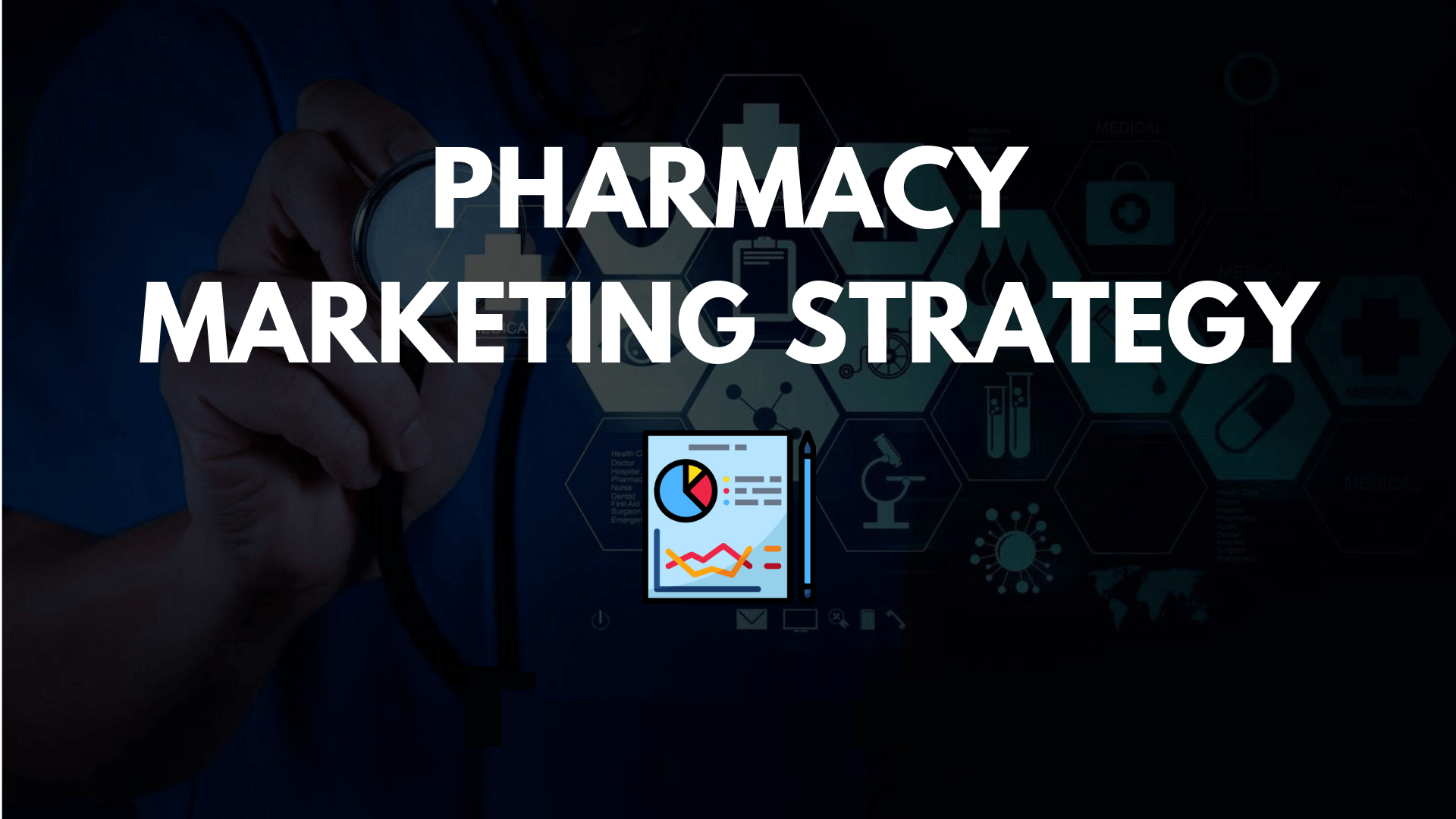STRATEGIC PHARMACEUTICAL MARKETING
Pharmaceutical organisations regardless of where it sits within the supply chain or whether it focuses on a B2B or B2C audience will need to adapt a particular marketing strategy to effectively sell its products and services. We’ll run through some of the most common pharmaceutical marketing strategies next.
MARKET/PRODUCT DEVELOPMENT STRATEGY
A product/market development strategy concerns developing new products or modifying existing products and offering those products to current or new markets. These strategies typically surface when there is little opportunity for growth in an organisation’s existing market.
The four most common strategies in this category derive from the Ansoff Matrix (below): market penetration (growing sales of an existing product in existing markets), market development (launching an existing product in a new market), product development (introducing an existing product into a new market) and diversification (introducing a new product into a new market).
Your pharmaceutical product or service will be promoted in accordance with the Ansoff Matrix almost every time and can dictate the marketing strategy you will adopt. For example, we see so many partnerships and mergers in this industry, where pharmaceutical organisations combine their resources and leverage their strengths to increase market share in this manner. Should a pharmaceutical organisation want to sell more products in current markets, it might decide to invest more in its marketing budget.
SEARCH ENGINE OPTIMISATION
A search marketing (SEO) strategy looks to increase visibility on search engines to increase the number of visitors arriving at a website and its web pages. A strategic approach that takes time, but the results that manifest over this time are often long-term and can achieve an objective of becoming more visible, certainly in current markets. More and more pharmaceutical organisations are adopting more digital-first strategies such as this to increase visibility. For more, please see this article on Pharma SEO.
DIRECT SALES
The traditional method of employing sales personnel and then deploying those in the regions and markets where you are looking to generate new customers is still widely used today. This is certainly the case in the B2B pharmaceutical markets where face-to-face contact is still a large enabler of business. This non-marketing strategy needs guidelines on how to recruit salespeople who understand how to sell products in new and often emerging markets but has proven (and still does) to be effective.
REVENUE STRATEGY
A revenue model strategy (or more casually, a business strategy) is a strategy usually focused on forming a product or service whereby advertising or licencing revenue can be generated subsequently, or more broadly, a strategy focused on generating revenue.
Magazines and publications follow this strategy, albeit on different levels where a customer-base is usually built to be leveraged. In this case, the editorial team is commissioned to write content that is packaged into a printed publication, as well as for an online audience that can subscribe, that is then used to drive advertising revenue from organisations that wish to advertise to this audience. Co-branded promotions and list rentals are hugely popular in this respect and are not limited to media and publishing organisations alone, as many organisations outside of this space can adopt this strategy to reach its business goals.
Pharmaceutical organisations also outsource at least part of their R&D processes to other pharmaceutical organisations and according to AMR Research, today most pharmaceutical and biotech companies outsource at least a proportion of their clinical trial management process, another example of how pharmaceutical are perusing cost/revenue-based strategies.
AFFILIATE MARKETING
Affiliate marketing – a type of performance-based marketing in which a business rewards one or more affiliates for each visitor or customer brought by the affiliate’s own marketing efforts – broadly falls within this category. This is the case as an affiliate program’s sole purpose is to sell products with minimal marketing spend waste as affiliates are paid on a per-sale basis.
EMAIL MARKETING AND LIST BUILDING
Organisations that rent assets and inventories fall within this category, and email marketing has become a popular channel in this respect. Organisations can rent email lists (for a price) so that other organisations can sell their products to the subscribers within that email list. This is an interesting concept as, for the most part, the owner of the email list will not sell its own services to its own list. For more, see this article on B2B email marketing best practices.
TARGET MARKETING STRATEGY
Every pharmaceutical marketing strategy will involve an element of targeting. Targeting enables organisations to narrow their focus and aim marketing campaigns and messages at a specific segment of the market, thus becoming more relevant to the audience and increasing the chances of conversion into a customer or client. Essentially focusing on customers that an organisation can serve best.
A targeting strategy often involves focusing on organisations via one or more of the following attributes: Most profitable customers, larger or smaller organisations, loyal customers, customers that are not brand-loyal and employees of a particular organisation (see post on ABM strategies and tactics) for B2B organisations.
Depending on the pharmaceutical organisation type, this process is potentially a two-step process. The first targeting exercise is the customer from a B2B perspective and then the end-user from a B2C perspective. A holistic view on the segmentation process, for example, could enable an OTC and Nutraceutical marketing organisation to develop insights and perspectives that are essential for developing a winning strategy in the OTC and Nutraceutical market.
ADVERTISING STRATEGY
Marketing communications in a pharmaceutical organisation focuses on increasing the product performance of existing products as well as introducing new ones. A marketing communications strategy essentially involves determining the type of advertising an organisation will conduct so that it is best suited to reach the target market. There are several marketing communications strategies in this category. The most common include the multi-media advertising strategy (for a product that has several types of media support), the targeted, individualised advertising strategy (based on the targeted delivery of messages to existing customers or prospective customers) and the continuous advertising strategy (e.g., television, print, radio and online media).
Advertising a pharmaceutical product will most likely be on television, radio, in print, online and across social media. Effective marketing communications strategy will offer your organisation a sound way to promote the success and effectiveness of your product and/or service throughout the value chain.
For example, the pharmaceutical product or service you market must be obvious, in-depth and of high quality. Be wary of the jargon you use and that you have a clear, concise one- or two-sentence message, and your explanation of your product must provide a satisfying reply to the questions most people ask themselves.
SALES MANAGEMENT STRATEGY
The sales management strategy is one where organisations attempt to motivate their sales force and target customers to sell the products. Depending on the size of the organisation, this strategy can involve extensive training and often involves a salesperson visiting potential customers. You need to ask yourself whether you need all of these options:
For large, for-profit organisations, the sales management strategy entails developing new sales processes and procedures as well as recognising the training needs of its employees.
The sales management strategy can include quality management strategies and post-sales follow-up services.
CARE MARKETING STRATEGY
Pharmaceutical organisations leverage their reputation and identity to sell products and services. This strategy involves creating, communicating, and managing messages in a way that benefits its brand identity and reputation.
Care marketing involves company-wide initiatives to build loyalty, brand awareness, and provide customers with superior purchasing, treatment and health care experience.
Care marketing is not limited to packaged pharmaceutical products but can also extend to pharmaceutical services.
By engaging with key stakeholders directly and by tailoring the content to reach the audiences you want to engage in the process, care marketing can engender trust and create long-term relationships with existing and new customers.
How To Market A Pharmacy?
It has never been easier to administer medications in Australia. Online pharmacies bring level of choice to the drug store, and while there are many cheap online sites, there are also many with only one or two generic brand types. Due to Internet pharmacies, you do not have to worry about ‘customer service’ and ‘returning the goods’ with your prescription – just click ‘consume’ and it’s yours.
While there are many online pharmacies Australia, we have recommended and rated a few of the most popular online pharmacy sites, based on finding the best product prices and service offered. Online pharmacies in Australia offer a wide range of generic medicines in the same quantity as you would find in many local pharmacies. These sites all offer Australian customers an easy online service to buy prescription medicines from. It has never been easier for Australia people to purchase prescription drugs online that are just as effective, if not more effective, than those found in pharmacies in Australia.
Every online pharmacy site in Australia is bound by the Pharmacy Act 1996, and if you buy prescription drugs online via one of these pharmacies, you are protected by the law. Below are the sites we consider the best online drug stores Australia has to offer.
Benefits of Marketing Strategy For A Pharmacy
It is important to note that there are benefits to managing a pharmacy. These advantages are illustrated below:
Customer Targeting
There are many tools that are available to a pharmacy that can assist with targeting customers in a more effective manner. There are numerous options and strategies that the pharmaceutical business can use to benefit customers. When developing marketing strategies a company should first seek to improve the customer experience.
Customer satisfaction is a key element when developing marketing strategies for a pharmacy, and customer service is a crucial component of this satisfaction.
Customer Service
In some ways, customer service is the most important element of a pharmacy. There are many elements that should improve customer service levels that cannot be ignored. A customer may have a complaint about a website or about the service that was offered but their concerns are quickly recognized and the customer will appreciate the company’s response to their concerns. Using a quality customer service is an important part of Pharmacy’s main marketing strategy.
Revenue Generation
A pharmacy must be able to generate revenues because, in practical terms, pharmaceutical companies operate on a profit and loss account. Sales are critical to a pharmacy’s success, and keeping the customer happy will likely encourage continued purchases. While many pharmaceutical companies use online tools and software to improve their service, life sciences CRM evaluation becomes essential for targeted tools to enhance revenue, patient relationships, sales, marketing endeavours, and customer engagement.
Quality
It is important that a pharmacy provide the highest standard of service for its customers. A company must ensure that its employees have the right skills and training so its customers receive the highest quality services.
Marketing Strategies
Marketing strategies rely on the premise that in order to attract customers, they must be made to know about the products and services offered by a business. Marketing strategies are the groups of strategies designed to achieve this goal. Marketing strategies can involve a variety of methods that can include public relations, advertising, direct marketing, referral marketing, and creating sales campaigns.
Direct Marketing
Direct Marketing refers to any type of marketing that does not involve a third party. The majority of marketing takes place because the business wants to transfer a message to customers for a particular purpose. Some examples of direct marketing are collateral material, a product display at retail locations, and direct mail.
Advertising
Advertising is one of the most popular forms of marketing that is utilized by a pharmacy. Advertising is an important element of the marketing mix. It is used to communicate information about health and life-style issues, to put a product or service in a context, and to build and strengthen the brand name.
Public Relations
Public Relations is defined as any publicity or publicity that involves spreading information about a brand or product, or even creating news stories and pictures that make a product or service seem better than it really is.
Some examples of Public Relation includes press conferences, news releases, and letter writing. The pharmacy must create an image that is appealing to the public, and without this image, word of mouth will not be strong enough to provide customers with more information about the pharmacy’s products.
















